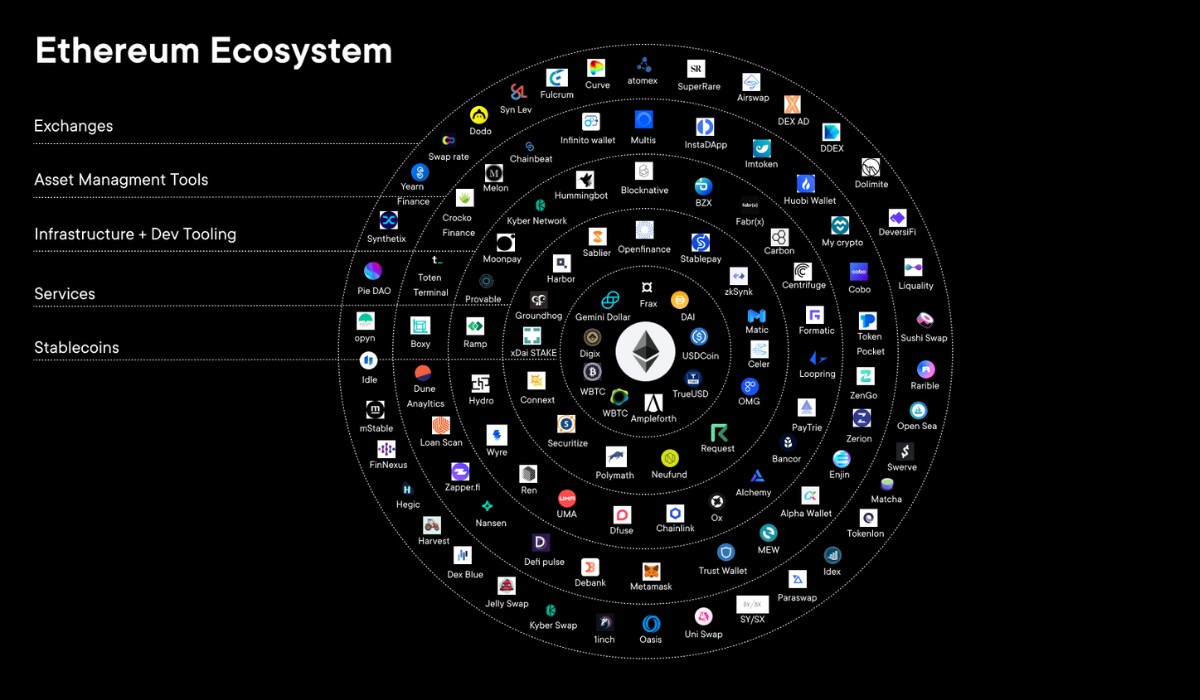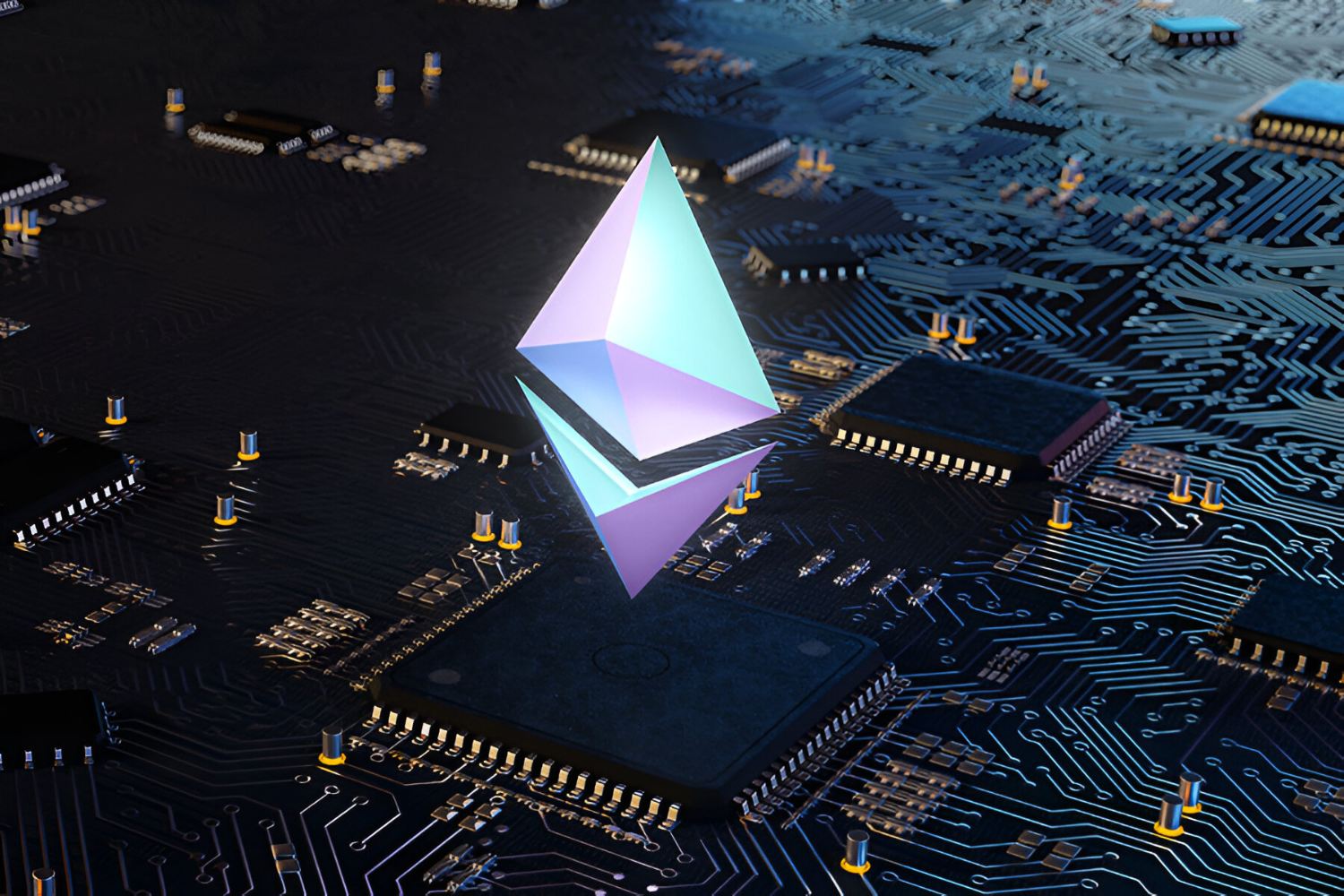Introduction
Ethereum, the world’s largest decentralized blockchain platform, has revolutionized the way we think about technology and finance. It provides a robust and flexible infrastructure that enables developers to create a wide variety of projects, ranging from decentralized finance (DeFi) applications to non-fungible token (NFT) marketplaces and everything in between.
Since its launch in 2015, Ethereum has attracted a thriving ecosystem of developers, entrepreneurs, and enthusiasts who are constantly pushing the boundaries of what is possible on the blockchain. With its Turing-complete programming language, Solidity, Ethereum allows for the creation of smart contracts, which are self-executing contracts with the terms of the agreement directly written into lines of code.
The versatility and programmability of Ethereum have given rise to countless projects that aim to solve real-world problems and disrupt traditional industries. From finance to gaming, identity management to supply chain logistics, the diversity of projects on Ethereum is astonishing.
In this article, we will explore some of the most prominent project categories on Ethereum and dive into the innovative solutions they offer. Whether you’re an investor looking for the next big opportunity, a developer seeking inspiration, or simply curious about the potential of blockchain technology, this article will serve as a comprehensive guide to the exciting projects flourishing on the Ethereum network.
What is Ethereum?
Ethereum is a decentralized blockchain platform that enables the creation and execution of smart contracts. It was proposed by Vitalik Buterin in late 2013 and officially launched in 2015. While Bitcoin introduced the concept of a decentralized digital currency, Ethereum expanded on this idea by allowing developers to build decentralized applications (DApps) on its platform.
At its core, Ethereum is a distributed ledger technology that records all transactions and smart contract executions on its blockchain. However, what sets it apart is its Turing-complete programming language, Solidity, which allows developers to create complex smart contracts with custom logic and operations.
Smart contracts on Ethereum are self-executing agreements with the terms of the contract written directly into lines of code. They automatically execute when predefined conditions are met, eliminating the need for intermediaries and providing trust and transparency.
One of the key features of Ethereum is its ability to deploy and execute decentralized applications. These applications are built on the Ethereum Virtual Machine (EVM), a runtime environment that executes smart contracts. Developers can create DApps that interact with smart contracts, bringing automation and decentralization to various industries and use cases.
Ethereum operates on a proof-of-work (PoW) consensus mechanism, similar to Bitcoin, where miners compete to solve complex mathematical problems to validate transactions and add them to the blockchain. However, Ethereum is in the process of transitioning to a proof-of-stake (PoS) consensus mechanism, known as Ethereum 2.0, which will be more efficient, secure, and environmentally friendly.
Overall, Ethereum has reshaped the landscape of blockchain technology and opened up a world of possibilities. Its programmability, flexibility, and vast developer community make it a breeding ground for innovation, with a wide range of projects leveraging its capabilities to create decentralized solutions across different industries.
Projects on Ethereum
The Ethereum blockchain has spawned a vibrant ecosystem of projects that leverage its capabilities to create innovative solutions across various industries. Let’s explore some of the key project categories that have emerged on Ethereum.
- Decentralized Finance (DeFi) Projects: DeFi has been one of the most significant and successful use cases on Ethereum. These projects aim to recreate traditional financial systems in a decentralized and permissionless manner. From lending and borrowing platforms to decentralized exchanges and stablecoins, DeFi projects have revolutionized traditional finance by eliminating intermediaries and providing access to financial services for users around the globe.
- Non-Fungible Token (NFT) Projects: NFTs have gained immense popularity recently, and Ethereum has been at the forefront of this digital asset revolution. NFTs represent unique, indivisible digital assets that can be bought, sold, and traded on Ethereum. These projects have opened up new avenues for artists, musicians, and content creators to monetize their digital creations, with applications ranging from digital art marketplaces to virtual real estate ownership.
- Gaming and Virtual Reality (VR) Projects: Ethereum has also become a playground for gaming enthusiasts and developers. With its ability to create digital assets and execute complex logic, Ethereum enables the development of blockchain-based games and virtual reality experiences. These projects utilize blockchain’s immutability, scarcity, and interoperability to introduce new gaming mechanics, item ownership, and in-game economies.
- Identity and Privacy Projects: Blockchain technology has the potential to revolutionize identity management and privacy. Ethereum-based projects are exploring decentralized identity solutions that empower individuals to have control over their personal information, while still allowing for secure and seamless authentication processes. These projects aim to tackle issues such as data breaches and identity theft by leveraging the transparency and security of the Ethereum blockchain.
- Supply Chain and Logistics Projects: Ethereum is being used to streamline supply chains and improve transparency and traceability. These projects aim to create a decentralized and immutable record of every step in the supply chain, from production to distribution. By leveraging Ethereum’s smart contracts, real-time tracking, and verification, these projects can enhance efficiency, reduce fraud, and provide consumers with reliable information about the products they purchase.
- Cross-Chain Interoperability Projects: As the blockchain ecosystem expands, the need for interoperability between different blockchains becomes crucial. Ethereum-based projects are working on solutions to enable seamless communication and transfer of assets across different blockchain networks. These projects facilitate the exchange of value, data, and tokens between different blockchains, unlocking new possibilities for collaboration and innovation.
- Social Networks and Content Platforms: Ethereum has also seen the rise of decentralized social networks and content platforms. These projects aim to create alternatives to traditional centralized platforms, where users’ data and content are owned and controlled by a few entities. By leveraging Ethereum’s decentralized infrastructure, these projects enable users to have ownership and control over their data, while also providing incentives for content creation and curation.
- Energy and Sustainability Projects: Ethereum is also being explored for its potential in energy and sustainability initiatives. Projects are leveraging blockchain technology to create transparent and decentralized energy markets, enabling peer-to-peer energy trading and reducing reliance on traditional energy providers. These projects aim to promote renewable energy sources, increase energy efficiency, and empower individuals to participate in the clean energy transition.
These are just a few examples of the diverse and exciting projects flourishing on the Ethereum blockchain. As Ethereum continues to evolve and improve, we can expect to see even more innovative solutions and opportunities arise in the future.
Decentralized Finance (DeFi) Projects
Decentralized Finance, commonly known as DeFi, has emerged as one of the most prominent and influential categories of projects on the Ethereum blockchain. DeFi projects aim to recreate traditional financial systems and services in a decentralized, transparent, and permissionless manner.
One of the key components of DeFi is the use of smart contracts to create decentralized applications (DApps) that facilitate financial activities like lending, borrowing, staking, trading, and more. These DApps remove the need for intermediaries like banks or financial institutions, allowing individuals to have full control over their assets and engage in financial activities directly on the Ethereum blockchain.
Lending and borrowing protocols are among the most popular DeFi projects. These protocols enable individuals to lend their digital assets to others in exchange for interest or borrow assets by collateralizing their existing holdings. With no intermediaries involved, these protocols can offer competitive interest rates as compared to traditional financial institutions.
Decentralized exchanges (DEXs) are another integral part of the DeFi ecosystem. These exchanges operate with the help of smart contracts, allowing peer-to-peer trading of digital assets directly from users’ wallets. DEXs provide a more secure and transparent alternative to centralized exchanges, where users have full control over their funds during the trading process.
Stablecoins have also gained significant popularity within the DeFi realm. Stablecoins are cryptocurrencies that are pegged to a stable asset, usually a fiat currency like the US Dollar. These stablecoins provide stability in a volatile cryptocurrency market and enable users to seamlessly transfer value between different cryptocurrencies and traditional financial systems.
Furthermore, yield farming and liquidity mining projects have become prevalent in the DeFi space. These projects offer incentives to users, such as tokens or interest rates, for providing liquidity to certain protocols or participating in specific DeFi activities. Yield farmers earn rewards by locking up their assets in smart contracts, which are utilized by DeFi protocols to provide liquidity to traders.
The DeFi space on Ethereum is constantly evolving, with new projects and innovative solutions being introduced regularly. However, it is essential for users to exercise caution and perform due diligence before engaging with any DeFi project, as vulnerabilities and risks exist within this nascent ecosystem.
Overall, DeFi projects on Ethereum are reshaping the traditional financial landscape by providing individuals with greater control over their finances, removing intermediaries, and offering innovative financial services on a global scale.
Non-Fungible Token (NFT) Projects
Non-Fungible Tokens (NFTs) have taken the digital world by storm, and Ethereum is at the forefront of this transformative technology. NFTs are unique digital assets that are indivisible and cannot be exchanged on a one-to-one basis like cryptocurrencies. Instead, each NFT holds distinct characteristics and properties, making them valuable and collectible.
Ethereum’s smart contract capabilities have provided the perfect infrastructure for NFT projects to thrive. These projects enable creators and artists to tokenize their digital artwork, music, videos, virtual real estate, and more, giving them a digital certificate of authenticity and ownership on the blockchain.
One of the most notable NFT projects on Ethereum is the explosion of digital art marketplaces. Artists can digitize their artwork, mint it as an NFT, and sell it directly to collectors, removing the need for intermediaries like galleries or auction houses. These marketplaces provide a global platform for artists to showcase their work, reach a wider audience, and receive direct compensation for their creations.
Virtual real estate projects have also gained significant traction within the NFT space. Virtual worlds and metaverses are being built on Ethereum, allowing users to purchase, own, and trade virtual land and properties. These NFT-based virtual environments offer endless creative possibilities, with users able to design and monetize virtual experiences and build immersive digital communities.
NFTs have also permeated the music and entertainment industries. Musicians, bands, and content creators are tokenizing their music, albums, and other forms of media as NFTs, allowing fans to own exclusive rights and access special perks. This not only provides a new revenue stream for artists but also enhances fan engagement and creates a direct connection between creators and their audience.
Another fascinating use case of NFTs is in gaming. NFTs enable the ownership and trading of in-game items, characters, and virtual assets on the blockchain. Players can truly own their digital belongings and freely trade them with other players, creating a real-world economy within virtual gaming worlds.
While the NFT space is thriving, it is important to note that there are debates surrounding the environmental impact and market speculation within the market. As with any investment or digital asset, caution and research are essential for participants in NFT projects.
Ethereum’s role as the leading platform for NFT projects continues to evolve, with new applications and creative opportunities emerging. The intersection of art, technology, and ownership provided by NFT projects on Ethereum is revolutionizing how we perceive and interact with digital assets.
Gaming and Virtual Reality (VR) Projects
Gaming and Virtual Reality (VR) have experienced a significant transformation thanks to Ethereum’s smart contract capabilities, allowing for the creation of blockchain-based games and virtual reality experiences. With its ability to store and transfer digital assets securely, Ethereum has become an ideal platform for gaming and VR projects.
Blockchain-based games on Ethereum offer several advantages over traditional gaming. One key benefit is the concept of true ownership and scarcity of in-game items. Players can acquire and trade unique digital assets, such as characters, weapons, or items, as Non-Fungible Tokens (NFTs) on the Ethereum blockchain. This gives players full control and ownership of their virtual possessions, creating new possibilities for monetization and value creation within gaming economies.
Blockchain technology also allows for increased transparency and fairness in gaming. Ethereum-based games can leverage smart contracts to establish predefined rules and gameplay mechanics, ensuring a level playing field for all participants. Game outcomes, rewards, and the distribution of in-game assets can be programmed into the Ethereum blockchain, reducing the potential for cheating or manipulation.
Virtual Reality (VR) experiences have also found a home on the Ethereum blockchain. VR platforms built on Ethereum can provide immersive experiences, enabling users to interact with virtual worlds and assets. These VR experiences can be tied to NFTs, allowing users to possess and customize their VR assets, such as virtual real estate or avatars, with the ability to trade or showcase them within the Ethereum ecosystem.
Furthermore, Ethereum’s openness and interoperability enable cross-game compatibility and asset exchange. Players can take their assets from one Ethereum-based game to another, bringing their virtual wealth and achievements with them. This interoperability fosters collaboration between game developers and provides a more seamless and connected gaming experience for players.
In addition to enhancing gameplay experiences, Ethereum-based gaming and VR projects incentivize participation and engagement through tokenization. Players can earn tokens by completing in-game tasks, achieving milestones, or contributing to the community. These tokens can be traded, used to unlock additional features within the game, or even exchanged for real-world value.
As the Ethereum ecosystem continues to evolve, we can expect to see more sophisticated gaming and virtual reality projects emerge, pushing the boundaries of what is possible in the world of gaming and immersive experiences. The combination of blockchain technology, decentralized ownership, and virtual reality creates a new paradigm for gaming that empowers players and unlocks new levels of creativity and innovation.
Identity and Privacy Projects
Identity management and privacy are critical issues in today’s digital world, and Ethereum-based projects are exploring innovative solutions to address these concerns. By leveraging the transparent and immutable nature of the Ethereum blockchain, these projects aim to provide individuals with control over their personal information while ensuring data privacy and security.
Decentralized identity projects on Ethereum allow users to create and manage their digital identities without relying on centralized authorities or third-party intermediaries. Users can store their identity credentials, such as passports, licenses, and certifications, as encrypted data on the Ethereum blockchain. This gives individuals the ability to maintain sovereignty over their personal information and selectively share it with trusted entities, increasing privacy and reducing the risk of identity theft.
Privacy-focused projects on Ethereum utilize zero-knowledge proofs and cryptographic techniques to enhance data privacy. Zero-knowledge proofs allow parties to verify the authenticity of certain information without revealing the actual data itself. This enables users to interact and transact on Ethereum without disclosing sensitive information, empowering them with privacy and anonymity.
Moreover, Ethereum-based privacy projects aim to provide secure and private communication channels. These projects leverage encryption algorithms and decentralized peer-to-peer networks to allow individuals to communicate and transfer data without the risk of eavesdropping or interception. These innovative solutions prioritize user privacy while maintaining the robustness and security of Ethereum’s infrastructure.
By removing the need for centralized intermediaries and storing data on a distributed ledger, Ethereum-based identity and privacy projects offer increased trust and transparency. Individuals can have confidence that their personal information is secure, tamper-proof, and accessible only to authorized parties. These projects have the potential to disrupt traditional systems of identity management and usher in a new era of self-sovereign identity.
While Ethereum-based identity and privacy projects show great promise, it is important to ensure that these solutions are well-implemented, thoroughly tested, and comply with relevant data protection regulations. Privacy is a fundamental right, and as the development of these projects continues, it is crucial to strike a balance between privacy, convenience, and security.
The Ethereum blockchain, with its decentralized and transparent infrastructure, is providing the groundwork for innovative identity and privacy solutions that put individuals in control of their personal information. As these projects evolve and mature, they have the potential to redefine how we manage and protect our digital identities and data in the modern digital landscape.
Supply Chain and Logistics Projects
Supply chain and logistics processes are complex and often involve multiple stakeholders, making transparency, efficiency, and trust crucial for their successful operation. Ethereum-based projects are exploring the use of blockchain technology to revolutionize supply chain management, improve traceability, and enhance overall efficiency in the industry.
By leveraging the decentralized nature of the Ethereum blockchain, supply chain and logistics projects aim to create a transparent and immutable record of all transactions and activities involved in the supply chain. This eliminates the need for trust in centralized entities and reduces the potential for fraud, counterfeiting, and unauthorized modifications.
One of the key benefits of Ethereum-based supply chain projects is enhanced traceability. Each step in the supply chain, from production to distribution, can be recorded on the blockchain, providing an auditable and tamper-proof history of the product’s journey. This transparency enables consumers to verify the authenticity and origin of products, ensuring ethical sourcing and promoting trust in the supply chain.
Ethereum-based projects also facilitate the tracking of goods in real-time. By utilizing smart contracts, IoT devices, and sensors, these projects enable the seamless monitoring of the movement, temperature, and other parameters of goods throughout the supply chain. This real-time data empowers businesses to make informed decisions, optimize inventory management, and streamline logistics operations.
Furthermore, Ethereum-based supply chain and logistics projects allow for efficient and secure collaboration between different participants in the supply chain. Suppliers, manufacturers, distributors, and retailers can access a shared ledger, eliminating the need for redundant paperwork, manual reconciliation, and intermediaries. Smart contracts can automate contractual agreements, ensuring compliance and timely execution of obligations.
There are also initiatives leveraging blockchain technology to tackle issues such as counterfeiting and product provenance. By linking physical products to digital tokens on the Ethereum blockchain, consumers can easily verify the authenticity and ownership history of goods. This helps combat the circulation of counterfeit products, protects brand reputation, and builds consumer trust.
As the Ethereum blockchain continues to evolve and scale, supply chain and logistics projects are poised to offer even greater functionality and impact. Integration with emerging technologies such as Internet of Things (IoT), artificial intelligence (AI), and machine learning (ML) can further enhance supply chain management, enabling predictive analytics, demand forecasting, and optimization of logistics networks.
Ethereum-based supply chain and logistics projects hold the potential to transform the industry by improving transparency, efficiency, and trust. By revolutionizing the way goods are tracked, verified, and managed, these projects have the ability to reshape how we think about and operate within supply chains, benefiting businesses and consumers alike.
Cross-Chain Interoperability Projects
As the blockchain ecosystem continues to expand, the need for interoperability between different blockchain networks becomes increasingly important. Ethereum-based cross-chain interoperability projects aim to address this challenge by enabling seamless communication and transfer of assets between different blockchain networks.
While Ethereum has established itself as the leading smart contract platform, there are other blockchains with unique features and capabilities. Cross-chain interoperability projects on Ethereum facilitate the exchange of value, data, and tokens between Ethereum and other blockchain networks, unlocking new possibilities for collaboration and innovation.
One approach to cross-chain interoperability is the use of bridges. These bridges act as connectors between Ethereum and other blockchains, allowing assets to be transferred between networks while maintaining their native characteristics. By integrating with multiple blockchains, Ethereum-based projects can tap into the features and functionalities of different networks, expanding their capabilities and user base.
Another approach to cross-chain interoperability is the development of decentralized exchanges (DEXs) that support trading across different blockchains. These DEXs leverage the concept of atomic swaps, where assets are exchanged directly between users across different networks, without the need for intermediaries or centralized exchanges. This enables users to seamlessly trade assets between Ethereum and other compatible blockchains.
Moreover, Ethereum-based cross-chain projects are exploring the use of wrapped tokens. Wrapped tokens are blockchain tokens that represent other blockchain assets, allowing them to be traded on Ethereum and utilize Ethereum’s smart contract capabilities. For example, tokens representing Bitcoin (BTC), known as wrapped Bitcoin (WBTC), can be used on Ethereum for decentralized applications and smart contracts, providing more utility to Bitcoin holders.
Interoperability between blockchains not only allows for asset transfers but also enables the integration of various functionalities and services. For instance, Ethereum-based projects can utilize decentralized oracle networks that aggregate data from different blockchain networks, providing access to real-world data and enabling smart contracts to interact with external systems.
Overall, cross-chain interoperability projects on Ethereum play a vital role in creating a connected and seamless blockchain ecosystem. By breaking down the barriers between different networks, these projects foster collaboration, innovation, and the efficient transfer of assets, ultimately enhancing the overall functionality and usefulness of blockchain technology.
As the blockchain industry continues to evolve, cross-chain interoperability becomes increasingly important to unlock the full potential of blockchain networks. Ethereum-based projects are at the forefront of developing solutions that enable seamless connectivity between blockchains, paving the way for a more inclusive and interconnected blockchain ecosystem.
Social Networks and Content Platforms
Social networks and content platforms have become an integral part of our digital lives, but they often suffer from issues related to centralized control, data privacy, and content ownership. Ethereum-based projects are exploring the potential of blockchain technology to create decentralized alternatives that prioritize user privacy, content ownership, and financial incentives for creators.
Decentralized social networks on Ethereum aim to eliminate the need for central authorities that control and profit from user data. These projects leverage the transparent and secure nature of blockchain technology to give users ownership and control over their data, allowing them to choose how their information is shared and rewarding them for their contributions to the network.
Content platforms built on Ethereum provide an environment where creators can monetize their work directly, without the need for intermediaries or advertising revenue. With the use of smart contracts and cryptocurrency micropayments, users can compensate creators for their content, allowing them to focus on producing high-quality work and building a loyal audience.
Blockchain-based social networks and content platforms also address issues related to content ownership and censorship. By leveraging the immutability and transparency of the Ethereum blockchain, these projects enable creators to retain copyright control over their work and ensure that their content cannot be arbitrarily censored or modified.
Another advantage of Ethereum-based social networks and content platforms is the potential for community governance. These platforms use decentralized governance models, where decision-making is distributed among the network participants. Users can propose and vote on platform changes or content policies, creating a more inclusive and democratic social environment.
Moreover, Ethereum-based projects are exploring the concept of social tokens, where users can create and distribute their own tokens to reward and incentivize community engagement. These tokens can be used within the platform ecosystem for voting, accessing exclusive content, or participating in community events, fostering a sense of ownership and financial participation among the users.
As Ethereum’s scalability and usability improve, we can expect the development of more robust and user-friendly social networks and content platforms. The potential for decentralized applications on Ethereum to disrupt traditional social media and content distribution models is significant, providing alternatives that prioritize user privacy, content ownership, and community governance.
While the adoption of blockchain-based social networks and content platforms may still be in its early stages, the potential to revolutionize the way we connect, create, and share content is immense. Ethereum-based projects are at the forefront of this movement, offering a glimpse into a more decentralized, user-centric, and equitable digital future.
Energy and Sustainability Projects
Ethereum-based projects are exploring the potential of blockchain technology to address global energy and sustainability challenges. These projects aim to revolutionize the energy sector by creating decentralized, transparent, and efficient systems that promote renewable energy, enable peer-to-peer energy trading, and reduce carbon footprints.
Blockchain technology can facilitate the creation of transparent and traceable energy markets. By recording energy production and consumption data on the Ethereum blockchain, users can verify the source and origin of energy, ensuring its renewable nature and promoting a transition to cleaner energy sources. This transparency also enables better monitoring of energy consumption and efficient resource allocation.
Ethereum-based projects leverage smart contracts to enable peer-to-peer energy trading. Users can generate excess energy through renewable sources, such as solar panels, and sell it directly to others in their local community. By removing intermediaries and enabling direct transactions, these projects facilitate a decentralized energy economy, empowering individuals to actively participate in the clean energy transition.
Additionally, blockchain-based solutions on Ethereum can optimize energy grids and reduce energy waste. By leveraging real-time data from IoT devices and sensors, these projects can enable demand-response mechanisms, where energy consumption is adjusted based on grid conditions and pricing signals. This helps balance energy supply and demand, reducing inefficiencies and minimizing energy waste.
Ethereum-based projects also address the sustainability of supply chains in the energy sector. By leveraging blockchain’s transparency, projects can track the entire lifecycle of energy sources, ensuring compliance with sustainability standards and reducing the reliance on fossil fuels. From energy production to distribution, the blockchain provides a decentralized and tamper-proof record of the energy’s origin and its impact on the environment.
Moreover, blockchain-enabled energy projects on Ethereum can incentivize energy-conscious behavior through tokenization. Users can earn tokens for reducing energy consumption, participating in sustainability initiatives, or utilizing renewable energy sources. These tokens can be exchanged for rewards or discounts on energy bills, encouraging individuals to adopt more sustainable practices.
While the energy and sustainability sector is complex, Ethereum-based projects are making significant strides towards a more sustainable future. The transparency, efficiency, and decentralized nature of the Ethereum blockchain have the potential to transform the way we generate, consume, and trade energy, promoting renewable energy adoption and mitigating the impacts of climate change.
As the Ethereum ecosystem continues to grow and innovators explore more advanced solutions, we can expect the development of even more impactful energy and sustainability projects. By leveraging blockchain technology and collaborative efforts, the Ethereum community aims to drive positive change and pave the way towards a greener and more sustainable world.
Conclusion
The Ethereum blockchain has opened up a world of possibilities, empowering developers to create innovative projects that span a wide range of industries. From decentralized finance (DeFi) to non-fungible tokens (NFTs), gaming to identity management, supply chain to energy, Ethereum-based projects are redefining how we interact with technology and transforming traditional systems.
Decentralized Finance (DeFi) has emerged as a major force on Ethereum, revolutionizing traditional financial systems by providing open and permissionless access to financial services. Smart contracts enable complex financial operations, such as lending, borrowing, and trading, without the need for intermediaries, giving individuals greater control and transparency over their finances.
The rise of Non-Fungible Token (NFT) projects on Ethereum has transformed the digital art, entertainment, and gaming industries. NFTs have enabled creators to tokenize and sell their unique digital assets, revolutionizing ownership and monetization possibilities in the digital realm. Virtual reality experiences and blockchain-based games enhance user engagement and introduce new economies within virtual worlds.
Ethereum-based projects exploring identity and privacy offer self-sovereign solutions, allowing individuals to control their personal data while ensuring transparency and security. Supply chain and logistics projects leverage blockchain to enhance traceability, transparency, and efficiency, reducing fraud and improving consumer trust.
Cross-chain interoperability projects enable seamless communication between different blockchain networks, fostering collaboration and expanding the functionality of Ethereum-based applications. Social networks and content platforms are transitioning to decentralized models where users have ownership and control over their data and can be rewarded for their contributions.
Projects focusing on energy and sustainability aim to transform the energy sector, promoting renewable energy, enabling peer-to-peer energy trading, and reducing carbon footprints. These projects leverage blockchain technology to create transparent and efficient systems that optimize energy grids and encourage sustainable practices.
As Ethereum continues to evolve, the potential for further innovation and disruption across these project categories is immense. With scalability improvements and advancements in usability, Ethereum is well-positioned to continue driving the adoption of blockchain technology and shape the future of various industries. The Ethereum ecosystem is a hub of creativity and collaboration, and we can expect to see even more groundbreaking projects that push the boundaries of what is possible on the blockchain.
In summary, the projects on Ethereum demonstrate the transformative power of blockchain technology. They provide decentralized, secure, and transparent solutions that reimagine traditional systems and empower individuals in unprecedented ways. The Ethereum blockchain has truly become a hub of innovation and a catalyst for a decentralized future.

























